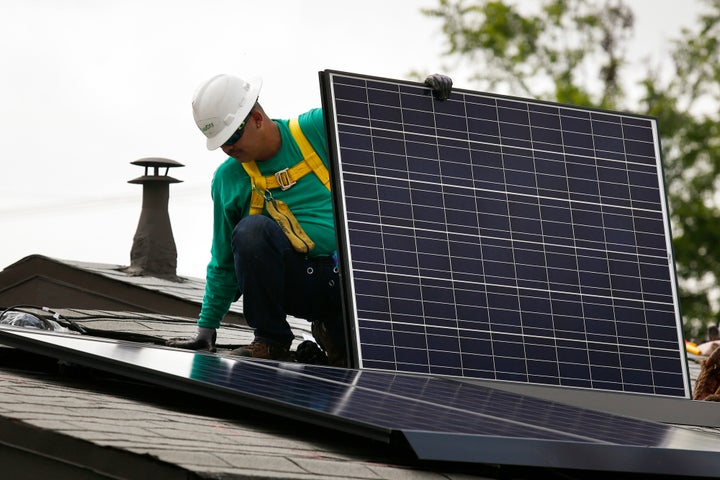
San Francisco just took a step toward its ambitious goal of relying solely on renewable energy by 2020 with a law that makes it the first major U.S. city to require solar panels on some new buildings, according to its sponsor.
Supervisor Scott Wiener's legislation, passed this week by the Board of Supervisors, is part of the city’s efforts to lower emissions and offset climate change.
“By increasing our use of solar power, San Francisco is once again leading the nation in the fight against climate change and the reduction of our reliance on fossil fuels,” Wiener said.
California law requires that new buildings less than 10 stories tall include "solar-ready" roof space, meaning 15 percent of the roof must be free from shade and obstructions. The San Francisco ordinance, which goes into effect next year, takes the requirement further by mandating that solar-ready space is actually used for solar panels. Two smaller California cities also require solar panels for new buildings.
The San Francisco ordinance says the solar energy is needed because the city is vulnerable to sea level rise due to carbon dioxide emissions. Solar energy can replace power generated by fossil fuels, reducing those emissions.
“San Francisco is already experiencing the repercussions of excessive CO2 emissions as rising sea levels threaten the City’s shoreline and infrastructure, have caused significant erosion, increased impacts to infrastructure during extreme tides and have caused the City to expend funds to modify the sewer system,” the ordinance states.
The city's goal is to reduce greenhouse gas emissions by 80 percent of 1990 levels by 2050. The solar panel requirement will lower carbon dioxide emissions for construction currently planned by 26.3 million tons of carbon dioxide annually, according to two former San Francisco environment commissioners who supported the ordinance.
New solar installations are increasing rapidly in the United States, and the cost has fallen dramatically. Solar power still makes up only a tiny fraction of the country’s energy production, but it has bigger potential: If solar panels were put on all viable homes, they could supply nearly 40 percent of the country's electricity needs, according to a study from the National Renewable Energy Laboratory. (The study’s author notes that filling every inch of sunny roof with solar panels is unrealistic.)
Clean energy has a value in the trillions, Secretary of State John Kerry said at the Bloomberg New Energy Finance conference earlier this month. He compared the economic opportunity with the tech industry's infancy. Kerry also underscored the human and environmental costs of continuing to rely on nonrenewable energy sources.
“Unless we harness the power of the sun, the wind and the oceans, the consequences will be devastating,” Kerry said.

